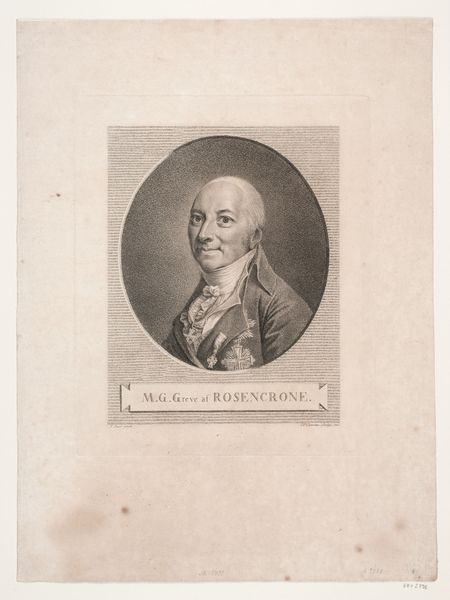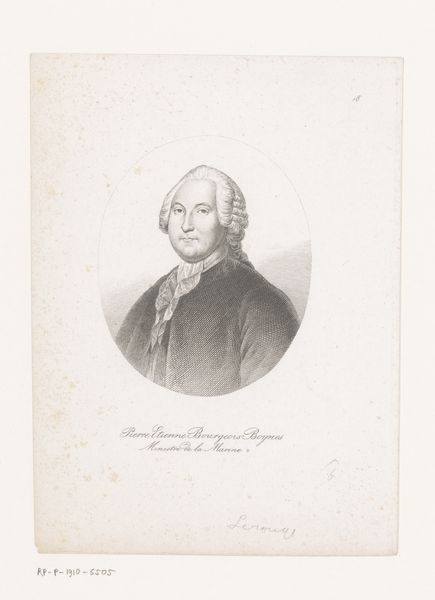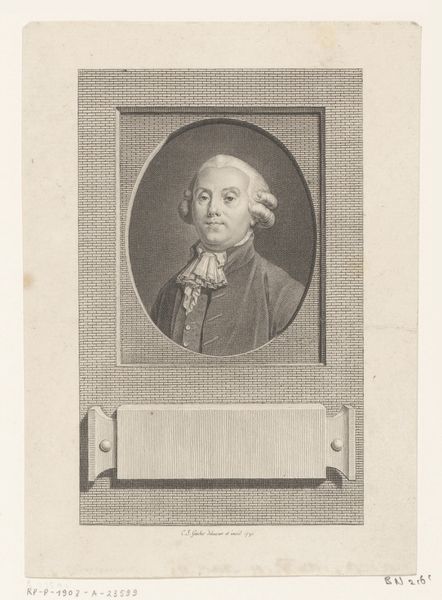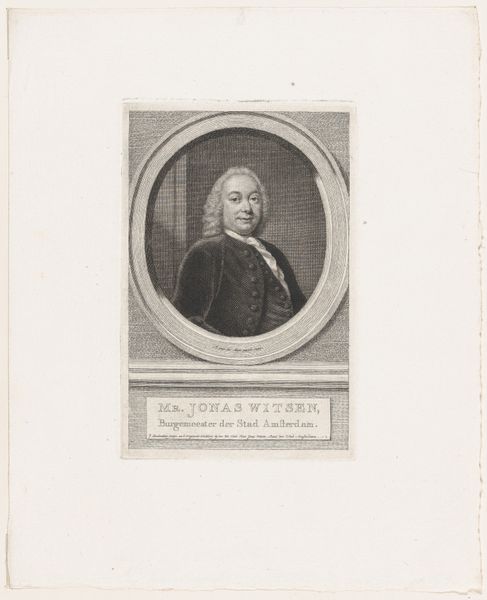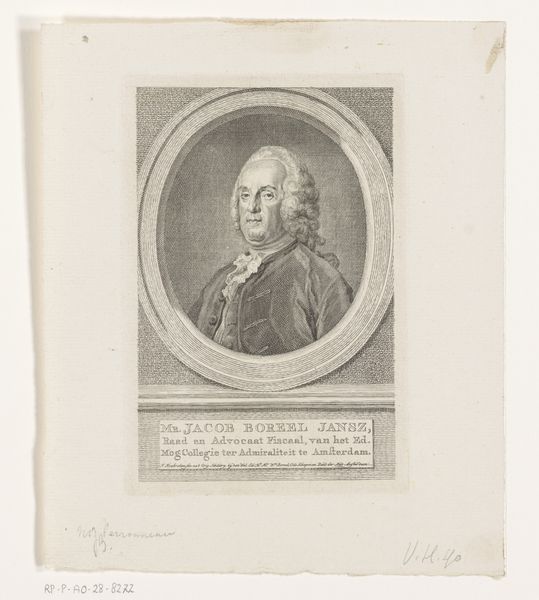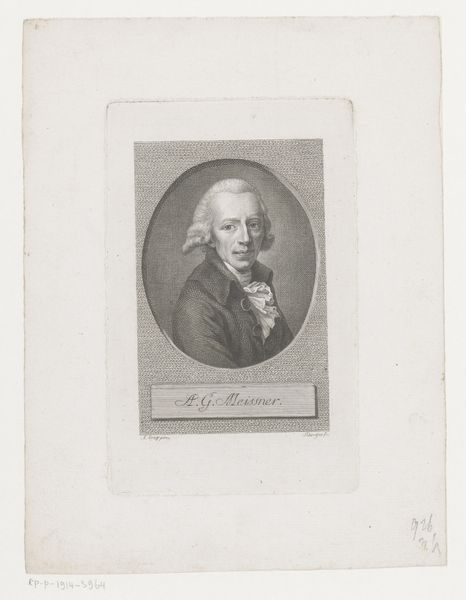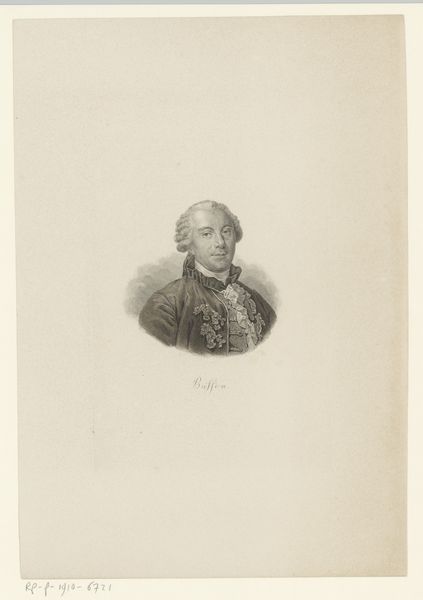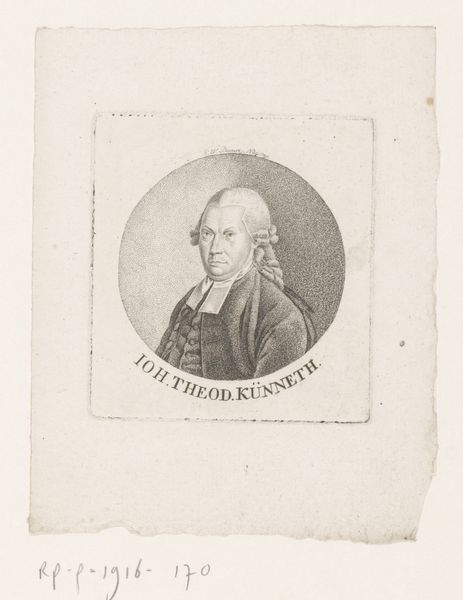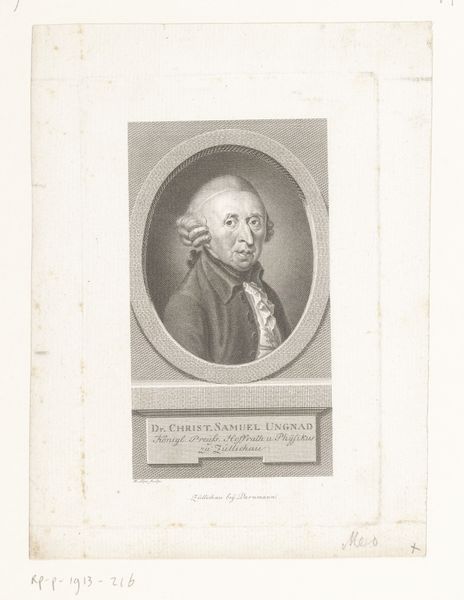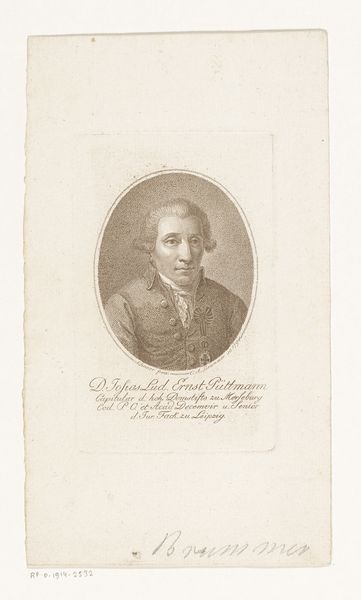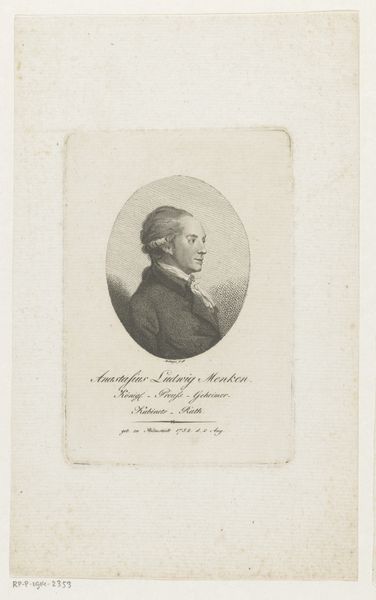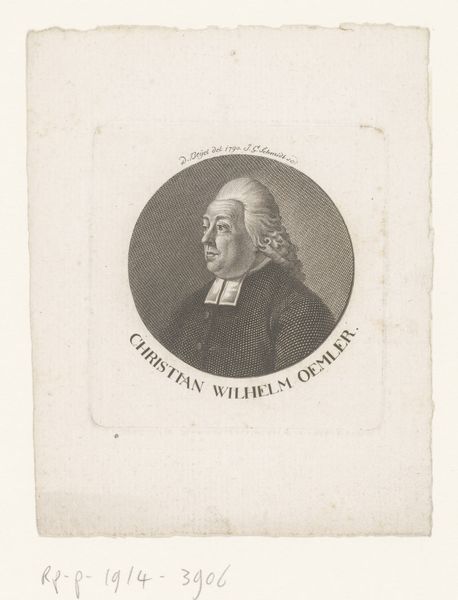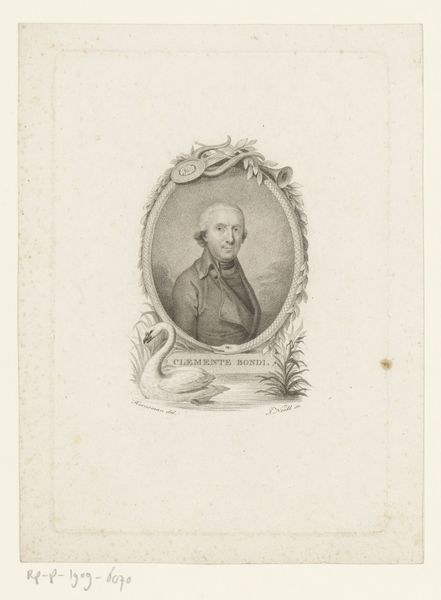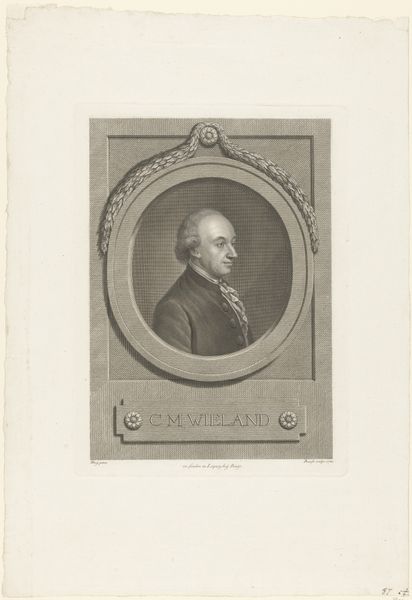
Portret van Karel Willem Ferdinand, hertog van Brunswijk-Wolfenbüttel 1794
0:00
0:00
engraving
#
portrait
#
neoclacissism
#
old engraving style
#
history-painting
#
engraving
#
realism
Dimensions: height 155 mm, width 109 mm
Copyright: Rijks Museum: Open Domain
This is a portrait of Karel Willem Ferdinand, Duke of Brunswick-Wolfenbüttel, made using a printmaking technique. The image is achieved through a method that would have been quite laborious, involving meticulous work on a metal plate. The texture we see is not unlike that of a fine drawing, but of course, it is the result of an indirect process. The artist, Paul Wolfgang Schwarz, would have used tools to incise the image into the plate, which was then inked and pressed onto paper. Consider the social implications of this process. Printmaking allowed for the dissemination of images far more widely than painting or sculpture ever could. While the Duke himself was part of the aristocracy, this portrait made him accessible to a broader public, subtly shifting the dynamics of power and representation. This wasn't just about art; it was about communication, politics, and the changing social landscape of the time. Recognizing the skill and the social context embedded in the artwork challenges our understanding of fine art, inviting us to appreciate the rich histories of creative practices.
Comments
No comments
Be the first to comment and join the conversation on the ultimate creative platform.
